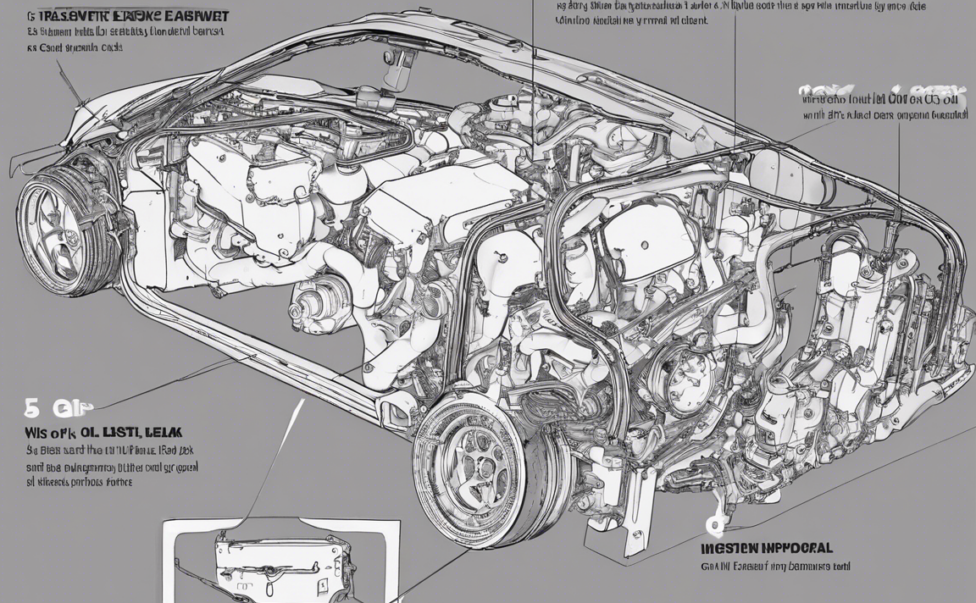Dealing with an Oil Pan Gasket Leak: What You Need to Know
Introduction:
An oil pan gasket leak is a common issue that many car owners face at some point. It can lead to oil leaking out of your engine and causing damage if not addressed promptly. In this article, we will discuss what an oil pan gasket leak is, the signs to look out for, how to diagnose the issue, and the steps to take for repair.
What is an Oil Pan Gasket Leak?
The oil pan gasket is a seal located between the engine block and the oil pan, preventing oil from leaking out. Over time, this gasket can wear out or become damaged, leading to an oil leak.
Signs of an Oil Pan Gasket Leak
- Oil spots under your car: One of the most obvious signs of a leak is the presence of oil spots on the ground where you park your vehicle.
- Low oil levels: If you notice that you are constantly needing to top up your oil, it could be due to a leak.
- Burning oil smell: A leak can cause oil to drip onto hot engine parts, resulting in a noticeable burning smell.
- Smoke coming from the engine: If oil is leaking onto the exhaust manifold, it can produce smoke or a burning odor.
- Oil light on dashboard: A drop in oil pressure due to a leak can trigger the oil pressure warning light on your dashboard.
Diagnosing an Oil Pan Gasket Leak
To confirm if you have an oil pan gasket leak, you can visually inspect the gasket for signs of damage or wear. Additionally, you can clean the area and monitor for fresh oil leaks to pinpoint the source.
Repairing an Oil Pan Gasket Leak
Repairing an oil pan gasket leak typically involves draining the engine oil, removing the oil pan, replacing the gasket, and reassembling the components. It is essential to use a high-quality replacement gasket and ensure proper torquing of the bolts to prevent future leaks.
DIY vs. Professional Repair
While some experienced car owners may choose to tackle an oil pan gasket leak repair themselves, others may prefer to enlist the help of a professional mechanic. Factors such as access to tools, time, and expertise can influence this decision.
Preventing Future Leaks
To prevent oil pan gasket leaks in the future, it is essential to adhere to regular maintenance schedules, check for leaks during oil changes, and address any issues promptly.
Frequently Asked Questions (FAQs) about Oil Pan Gasket Leaks
Q1: Can I continue driving with an oil pan gasket leak?
A: It is not recommended to drive with an oil pan gasket leak as it can result in low oil levels and potential engine damage.
Q2: How much does it cost to repair an oil pan gasket leak?
A: The cost of repairing an oil pan gasket leak can vary depending on the vehicle make and model, the extent of the damage, and whether you choose to replace the gasket yourself or hire a mechanic.
Q3: How long does it take to repair an oil pan gasket leak?
A: Repairing an oil pan gasket leak can take a few hours to a full day, depending on the complexity of the repair and the experience level of the person performing the task.
Q4: Can an oil pan gasket leak cause engine damage?
A: Yes, an oil pan gasket leak can lead to low oil levels, which can cause engine components to wear out prematurely or fail.
Q5: How can I differentiate between an oil pan gasket leak and other types of leaks?
A: An oil pan gasket leak typically originates from the bottom of the engine and may leave oil spots directly under the oil pan area, while leaks from other sources may appear in different locations.
In conclusion, an oil pan gasket leak is a repairable issue that should not be ignored. By understanding the signs, diagnosing the problem, and taking appropriate repair measures, you can address the leak and prevent further damage to your vehicle. If in doubt, always consult a qualified mechanic for guidance and assistance.

